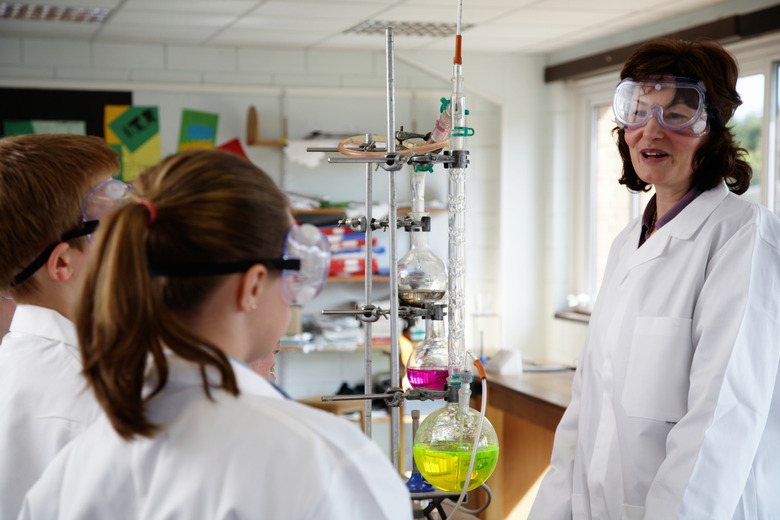Fun Experiments For The Periodic Table
The periodic table makes rich ground for educational experiments that are also fun and often surprising. Since the elements of the periodic table include everything from the lightest gas known to man to the most dense and heavy metal, and since many of them are found in everyday objects, it's easy to find experiments that will entertain students as they learn about chemistry.
Overview of Elements
Overview of Elements
Explain that elements are substances that cannot be divided into simpler elements. If you keep cutting gold into smaller and smaller pieces, you will still have pure gold, even down to the quantity of one atom. However, few elements are as stable as gold and many are not found in a pure state in nature because they combine easily with other elements. Even a relatively stable element like iron will combine with oxygen if left unprotected and will eventually turn to iron oxide, known better as rust. One of the major purposes of chemistry is to extract pure elements from complex compounds for industrial and scientific purposes.
Combining Elements
Combining Elements
Combining two or more elements can deliver some surprising results. For younger kids, mixing two clear gases, oxygen and hydrogen, will teach them a valuable lesson in an interesting way they'll remember. For older kids, add an alkali metal, such as sodium, to the oxygen and hydrogen to produce a small explosion. Have everyone wear safety gear for this particular experiment.
Isolating Elements
Isolating Elements
Elements, even some rare ones, can be found in combination with other elements in everyday products. For instance, lead can be found in products that darken gray hair and can be separated from the solution fairly easily. Another experiment that might confound kids is isolating copper from copper sulfate with electricity.
Reactions
Reactions
Many elements will react to the presence of air, fire or chemical compounds. One simple experiment is to isolate bubbles of hydrogen from water, then expose them to flame, causing small explosions. Some elements will react only in the presence of certain substances and then only with the greatest of difficulty. Demonstrate the story of the Danish scientists who saved two pure gold Nobel Prizes from the Nazis by dissolving them in aqua regia, a mixture of hydrochloric and nitric acids. Demonstrate the ability of hydrochloric acid to dissolve other metals, then place a small flake of gold in the acid. After a while, add nitric acid to the mix and observe what happens.
Cite This Article
MLA
PeterHisey, . "Fun Experiments For The Periodic Table" sciencing.com, https://www.sciencing.com/fun-experiments-periodic-table-12131882/. 24 April 2017.
APA
PeterHisey, . (2017, April 24). Fun Experiments For The Periodic Table. sciencing.com. Retrieved from https://www.sciencing.com/fun-experiments-periodic-table-12131882/
Chicago
PeterHisey, . Fun Experiments For The Periodic Table last modified March 24, 2022. https://www.sciencing.com/fun-experiments-periodic-table-12131882/
